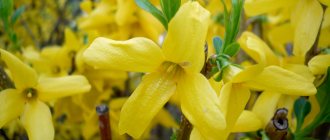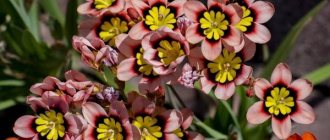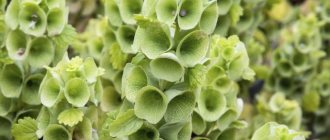When Europeans first heard and saw Chinese gardens and parks, they were simply amazed by their charm and originality. The Celestial Landscape Art School is completely unusual and unlike everything we are used to. There are no neat, trimmed lawns here, as is customary in the English style, there is no clear lines inherent in the principle of regularity of flower beds laid out in France, etc. In China, the highest value is nature itself. Therefore, here, even on the territory of a small area, they try to reproduce it with maximum accuracy and in the most harmonious manifestation.
An original Chinese garden - not only plants, but also rivers, mountains, lakes, even if recreated in miniature. It doesn't matter at all. The main thing is that the created landscape design helps people understand and feel the harmony between the surrounding nature and themselves.
History of creation
The ancient Chinese garden not only has centuries of rich culture, but also unique features. It has existed for more than five thousand years. Executed in various styles, the ancient types of Chinese gardens were considered the best among the existing three systems of structural parks in the world. This is how they are today.
The history of Chinese gardens dates back to the Shang and Zhou dynasties. Then they were called “yu”, which meant “closest to the landscape”. It was a beautiful place for socializing and playing. During the Han Dynasty, a Chinese garden was built as a villa and was called "yuan". Here emperors could relax and discuss state affairs.
The main idea that the Chinese garden represents is the “creation of the natural world” in miniature. When creating it, the natural landscape with all the features of the geographical area is used as much as possible. This approach can still be observed today in many national parks, especially when it comes to imperial or monastic Chinese gardens.
Parks and gardens in China can be roughly divided into seven types:
- parks based on natural landscapes;
- imperial parks and gardens;
- parks and gardens of Chinese religious buildings;
- parks and gardens of Chinese residences;
- conditionally developed territories;
- city parks and gardens;
- parks of burial places of emperors.
Chinese Garden
Funerary gardens and parks of China, as well as imperial parks, were built in China until 1949. Parks such as the Temple of Earth and the Temple of Heaven (Beijing) have long become part of the city and a place where everyone can walk. The parks are maintained by regularly restoring them and maintaining their original structure.
Famous Chinese parks and gardens abound with artificial grottoes, park pavilions and gazebos, bridges, observation decks with a view of the garden or park, and “green rooms” (a garden within a garden). Also in the parks and gardens of China you can often find sculptures and images of elephants, frogs, cranes, peacocks, cicadas, lions, and camels.
Description
One of the main directions of landscape art in the Celestial Empire is the creation of miniature landscapes on small plots of land. A variety of architectural structures can be placed in a traditional Chinese garden, for example, bridges, gazebos or pavilions. It must have bodies of water. You can even find rocks and grottoes. For overall aesthetics, rare species of trees and beautiful flowering shrubs, planted individually or in small groups, are added to the compositions.
Another direction is designing a landscape over a vast territory with the construction of huge reservoirs and large relief forms on it. Most often - man-made: rocks, mountains, waterfalls. The presence of large groups of plants, which can be separated by paths, as well as “rivers” or even “streams,” is considered mandatory. The most commonly used crops are Rosaceae. For example, there may be trees such as almonds, apple trees, cherries, plums, peaches, as well as tree-like or herbaceous plants: tulips, peonies, roses, iris, lilacs, lagerstroemias and other beautifully flowering representatives of the world of flora.
Peculiarities
A miniature garden in the Chinese style can be created even on a summer cottage plot measuring six acres, while owners of more impressive land areas are better off choosing the second design direction. The main idea of park design in the Middle Kingdom is for visitors to feel absolute peace, tranquility and unity with nature.
Another feature that characterizes the traditional Chinese garden is the creation of “limitlessness”, so that a person walking through it sees from each new point not just one picture, but several landscapes replacing each other. In this case, the elements of the composition must be in absolute harmony. Nothing should be too bright and catchy or, conversely, seem invisible.
Plant selection
In China, breeding work has always been at a high level; many bred varieties of flowers were endowed with their own symbolic meanings and influence on the formation of a favorable environment according to Feng Shui. Plants, according to landscape designers of the Celestial Empire, create not just beauty, but something uniquely beautiful. Flowers for a Chinese garden are chosen to be visually spectacular and at the same time sophisticated. There should not be too many of them; greenery is often planted around so that the whole picture gives the impression of sophistication.
In a Chinese garden you can usually see peonies, bulbous roses, climbing roses, and various types of beautifully flowering fruit trees.
Naturalness
A Chinese garden simply must look natural. The designer is required to create the impression that everything around was created without human intervention. It’s as if nature itself arranged trees, stones, and ponds into unusual, arbitrary images. However, few people know that such seemingly careless compositions are actually very deeply thought out to invite meditation and reflection.
Symbolism
A Chinese garden is not only one of the options for landscape design, but also a projection of the soul of its owner. After all, it is built according to the rules of Feng Shui, in which everything is subject to the harmony of the surrounding world. According to this teaching, the space surrounding a person should contain elements that symbolize the components of our Universe. Therefore, the components of the Chinese garden - the signs “yin” and “yang” - personify the unity of opposites. In the parks of the Celestial Empire, they are combined in such a way as to enable “qi” - life-giving energy - to move freely in space. In addition, most of the elements also symbolize various states of life, for example, a peach means well-being, a peony means wealth, etc.
Types of Chinese gardens
A modern Chinese garden is an opportunity to create a small, cozy world right in the backyard of your home. While the Western style emphasizes control over nature, the Chinese style demonstrates man's ability to incorporate nature into the artificial landscape. It is created from simple elements that together form one overall composition.
Now Chinese gardens are classified as follows:
- imperial hunting park;
- temple;
- scientist's garden (private);
- cemetery;
- natural (Resort park);
- back yard.
In general, confusion in articles about landscape design arises from the combination of elements that, according to their purpose, belong to one type, but are used by the designer in another. Thus, the royal gardens were more consistent with the term “landscape”, combining hills and water. The scientist's garden, that is, a private garden, created as a place of relaxation and solitude for a scientist seeking to escape the bustle of the city, began to actively develop since the Han Dynasty. The first documented garden of this type belonged to the calligrapher Wang Xizhi.
Did you know? The pagoda, according to Chinese beliefs, is known as the “place of peace.” The tall pointed tip at the top of her roof symbolizes a closer path to heaven and nirvana.
The Chinese courtyard, as an enclosed space, is also not a single object. It is based on a rectangular courtyard attached to the living space. Even in the Neolithic era, dwellings faced south, and settlements were located on a north-south axis. The art of orienting structures over time became the basis of Feng Shui. The courtyards were surrounded by buildings, like the Romans, their outer walls had no windows, and rich people had several courtyards, each of which had its own purpose. And everyone strictly followed the principles of geometric orientation.
Sacred temple gardens were a product of Taoism and Confucianism. It was they who began to consider space as an element of cosmogony. The garden was supposed to help meditation and facilitate a person’s transition to a more perfect state. In such places, ideal landscapes were created that combined geometry and naturalness.
Water
In the Celestial Empire, nature has always been taken very seriously. After all, it was believed that both joy and sorrow depended on it. A Chinese garden uses several essential components. One of them is water. By organizing a common space, it divides the territory into different zones. For example, a pond with its smooth surface is a symbol of calm and peace, jets from a fountain, streams or waterfall - perpetual motion. Any pond in a Chinese garden should not have artificial lining or high banks. Gazebos and pavilions installed on islands occupy almost the entire space rising above the water. This is necessary to create the impression that these buildings “grew” out of the water surface.
Chapter 2. 2.1. LANDSCAPE STYLE DIRECTION IN GARDEN AND PARK ART OF CHINESE AND JAPAN
Let us inform you that there is no unnecessary information here about landscape architecture, and only the necessary information. If you want to understand what landscape architecture, landscape gardens and parks, landscape gardening art, gardens are, be sure to look into the Theory of Landscape Architecture category.
the gardens and parks of China, Korea and Japan were fundamentally different from European ones. They were based on a special attitude towards nature associated with philosophy and religion.
China
gardening art in China originated in ancient times. Thus, Emperor Qing Shi Huang, under whom the Great Wall of China was built, is also known as the owner of a huge park, and Emperor Wu Ti of the Han Dynasty (140–87 BC) had a garden with artificial grottoes, streams and paths . Ornamental trees and shrubs grew in this garden. Gardens of that time were associated with Taoism, according to which nature was seen as the abode of the gods. They were areas of natural nature, isolated from the surrounding landscape (the so-called “parks of beautiful places” - bodarchu).
With the arrival of Buddhism from India to China (64 AD), garden art developed towards the formation of landscape compositions that express nature and convey a certain mood. The emotional orientation of the park led to the classification of its landscapes according to their impression into frightening (with dark groves, overhanging rocks, thundering water of mountain rivers, etc.), laughing (open, sun-drenched meadows, flowering plants), idyllic (calm expanse of water, island, pagoda). Landscape compositions were constructed to highlight the beauty of natural nature and create an endless variety of changing views.
The gardening art of China reached its greatest flowering in the 10th–12th centuries. and again - in the XIII-XIV centuries.
In the northern part of China, large gardens have developed, occupying vast areas of hundreds of hectares, and in the southern part (the economic center of the country) - small ones, located in residential buildings. However, all gardens share a number of common features. An integral (almost obligatory) part of the garden and the center of its composition is a pond. It occupies a significant part of the territory (30–70%). Near the reservoir there are palace buildings that form the architectural core of the park. The reservoirs have a rugged coastline and many islands, which provides alternating picturesque compositions as you move. For their perception, numerous park structures, gazebos, verandas, platforms, galleries, bridges are arranged, orienting the gaze in the desired direction with the help of figured openings in the walls - “penetrating windows”, framed by the supports of the galleries, by means of a neutral solution or isolating one of the sides of the route. The buildings are brightly colored, setting off the greenery of the parks, and are part of landscape paintings. Their poetic names set up a certain perception of pictures of nature or its manifestations (for example, a pavilion, “where snow is heard,” or “a gazebo, washed by the aroma of the forest,” etc.).
The assortment of plants is extremely rich: various types of pines, junipers, maples, Chinese oak, cedar, pear, plum, cherry, willow, bamboo; many beautiful flowering plants - camellias, azaleas, rhododendrons; flowers, among which peonies and chrysanthemums were especially valued, ponds were decorated with lotuses, and their banks with irises.
Sculptural decoration is rarely used. These are mainly images of birds or animals - a stork, a dragon, a turtle. More common are natural stones, which are not only used to decorate the shore of a reservoir or a hill, but are also installed as “natural” sculptures. In value they are equal to works of art.
An example is the Summer Palace Park near Beijing - Yiheyuan
(Park of Serenity) (Appendix, Fig. A 24). This is a complex of gardens with an area of about 400 hectares. The beginning of its creation dates back to the 14th century. The park was destroyed several times (in 1860 and 1900), but was restored again. Currently, it has an area of 270 hectares, of which 3/4 is occupied by Kunmenhu Lake. On the southern slope of Wanshoushan Mountain (Longevity Mountain), in the northern part of the park, facing the lake, there is an architectural ensemble with a multi-tiered tower and a complex of palace buildings. They are adjacent to courtyards with rocky gardens, ponds for ornamental fish and lotus, tree peonies, and magnolias. The northern slope is designed in the form of a forest.
A stream flows at the foot of the mountain. The lake has islands with gazebos and dams with galleries hundreds of meters long, which are part of walking routes.
The northern border of the site is skillfully camouflaged by low hills.
Chinese masters identify 8 basic principles of gardening art:
— act depending on local conditions;
— make the most of the surrounding nature;
- separate the main from the secondary;
- use contrasts: large and small, light and dark, wide and narrow, high and low;
- achieve big things in small things;
- take into account the harmony of proportions;
— use gradual disclosure of views; — take into account the time of perception of landscapes.
Chinese gardens had a great influence on the gardening art of other countries, and especially Japan. According to the site olymp.in. Chinese gardens contributed to the development of landscape style in Europe (mid- and late 18th century) and prompted the creation of the so-called Anglo-Chinese style. Today in China they preserve parks in their historical form and build new ones using traditions (Appendix, Fig. B 10, 11, 12).
Rice. 10. China
Rice. 11. China
Rice. 12. China
Japan
Garden art, together with Buddhism, came to Japan from India, through Korea and China in the 6th century. Throughout its history, which dates back almost one and a half thousand years, the Japanese garden was formed in line with the landscape style direction. This was facilitated by the nature of Japan with its mild climate, rich flora and variety of landscapes (rocky mountains, lakes, rivers, streams, waterfalls, sandbanks, wooded hills, etc.). The Japanese love for nature was expressed in the desire to concentrate all this diversity in a small area of the garden. The landscape created in such a garden is far from natural, but the image of nature is used as its basis. The main function of a Japanese garden is contemplation and appreciation of the beauty of landscapes from certain vantage points - terraces, house windows, viewing points along a walking route.
The Japanese garden developed along with the culture of its time, obeying the religious concepts of Buddhism and Shintoism. The following periods are distinguished in its development:
VI–VIII centuries – Nara period, characterized by the influence of Chinese culture. The capital Nara is being built on the model of the Chinese capital Changchan. At the palaces, the first gardens were created, similar to the Chinese ones, with a general design scheme of mountains and water. Semantic symbolism appears (pine - longevity, bamboo - durability, etc.).
This is the period of formation of the Japanese garden based on the synthesis of Japanese spatial concepts and Chinese garden compositions.
IX–XII centuries – Heian period. The capital is Kyoto. Characterized by a refined cultural life and the development of art. The garden takes on exquisite forms and is used both for entertainment and court celebrations, and for contemplation, reflection and relaxation. Like a theatrical set, its composition is built frontally and is perceived both from the house and from the water. The garden receives a typological planning scheme; its basis is a lake and an island. Thus, garden art is formed as a specific genre with its own formal characteristics and canons.
XIII – early XIV centuries. – Kamakura period. Characterized by the rise to power of the military nobility and the spread of the Zen Buddhism sect. The gardens become part of the temple complex.
XIV–XVI centuries – Muromachi period. It is characterized by the convergence of the Heian and Kamakura directions and a new flowering of culture. This period in the history of Japanese garden art is considered classic. Gardens develop at monasteries and are created by monks.
In the sixteenth century. a new type of garden appears - the tea ceremony garden.
Subsequently, many options for a temple garden appeared, and secular gardens reappeared as a necessary part of a residential building.
The starting point for the formation of gardens of the last two periods is the position of Zen Buddhism, according to which the beauty of nature is one of the forms of comprehension of truth. This contributed to the sharpening of aesthetic perception and the development of a poetic and metaphorical way of thinking. Gardens were supposed to invite contemplation and evoke a sense of emotional response. The main compositional principle, the so-called principle of uncertainty, was the creation of a harmonious balance of all elements of the garden, in which there is freedom, order, movement, and peace. It can be formulated as a denial of equality: the volumetric-spatial elements of the garden should not be the same size, and symmetry in their placement is unacceptable.
A long period of development of gardens in one direction and their canonization led to the formation of a number of typological features.
According to their functional purpose, palace and temple gardens, tea ceremony gardens, and gardens near residential buildings have historically developed.
Japanese masters of the 18th century. The following types of gardens were distinguished.
According to the nature of the relief: flat garden and hilly garden.
According to the complexity of the compositional structure: the full form is “sin”,
half-abbreviated – “so”, shortened – “ge”. The most expanded form of “syn” usually contains the entire set of compositional elements. The “ge” form is more compressed, and although the number of elements is small, they are more expressive and meaningful. The understatement should enhance the perception of the garden.
According to the main component on which perception is focused: a rock garden, a moss garden, a water garden, a landscape garden, etc. Regardless of the type of garden, stones and water form an integral part, its “skeleton” and “blood”.
Stones are selected according to shape, color, texture. Of these, groups are formed: the main one - determines the entire composition - the height of the hills, the size and outline of the reservoir, the placement of plants in the garden; auxiliary - subordinate to the main one and emphasizes its main idea: “guest group” - compositionally not subordinate to the main one, but balances it; a connecting group that compositionally unites the garden with the house, etc.
The composition scheme of the elements in each group is close to a scalene triangle, the long side of which should be facing the facade of the house facing the garden, the short side to the left, and the middle side to the right. The artist’s task is to feel the capabilities of each stone, to find the exact ratio of the stones, thereby organizing the plastic space of the garden.
Water is the basis of life in any garden. It is present in the form of a reservoir with a bay, islands, sandy and rocky shores and depicts a calm and wide river or a stormy stream with rapids. A favorite element of the garden is the waterfall.
In almost all compositions with a pond and islands, the main place is given to the “turtle island” and “crane island”, symbolizing the desire of the human spirit for the depths of knowledge and soaring upward, as well as the “paradise island”, which is not connected to the shore.
In “dry” gardens, water is symbolically represented by pebbles or sand.
Particular attention is paid to plants. The assortment is dominated by evergreen conifers and deciduous trees. With the help of plants, the change of seasons is emphasized: spring - with the flowering of fruit trees, autumn - with the color of leaves (especially maple), winter - with the pattern of naked branches. Preference is given to beautifully flowering trees and shrubs. There are very few flowers, sometimes there are none at all. The most beloved plant, sung in poetry and painting, is the densely colored Japanese pine. Among the flowering ones are plum (ume), cherry (sakura), camellia, azalea, hagi. Chrysanthemum, plum, orchid and bamboo, according to Japanese concepts, form the “four nobles” of the plant world. The arrangement of plants is canonized and is based on their symbolism and decorative features.
An integral part of the garden are garden structures: bridges, benches, stone lamps, fences, gates. They are made of natural materials - wood, bamboo, stone, sometimes metal (cast iron or bronze benches), without varnish or paint, in order to convey the texture of the material, its natural color and, what is especially appreciated, the patina of time - lichens on stone, fading tones of wood and bamboo, patina on metal.
In composition and color, the garden is closely related to painting. It is designed for static visual perception; its space is built according to the canons of painting. The general mutedness and softness of color, some monochrome, and the absence of bright colors bring Japanese garden paintings closer to monochrome ink painting.
A characteristic feature of the Japanese garden is symbolism. Behind the visible landscape with its beauty, refined form and finely thought-out composition lies a deeper content. It can be read by the symbolism that the components of the garden carry - by the shape and arrangement of stones, islands, etc.
“...the aesthetic value of plants, stones, sand, water (as such) is secondary to what they symbolize.” Hence the metaphorical nature of the garden, and the lack of clarity in conveying the image, which must be revealed by the viewer himself. These features are most clearly manifested in flat (philosophical) gardens.
One of the most popular is the rock garden of the Reanji Monastery in Kyoto, created at the end of the 15th - beginning of the 16th centuries. The garden is a small rectangular area (about 23x9 m) located in front of the house with a veranda that stretches along the garden and serves as a place for contemplation. On the opposite side, the garden is fenced with a low adobe wall, behind which rise the green crowns of trees. On the site, covered with white coarse sand, there are groups of 15 stones. The sandy surface is “combed” with a special rake so that the grooves run parallel to the long side of the garden and form concentric circles around each group of 2-3 or 5 stones. From any point on the veranda, out of 15 stones, only 14 are visible. “Purely visually, the garden resembles sea waves washing rocky islands, or a white veil of clouds, above which the tops of mountain peaks rise. The viewer himself, depending on his internal state and the direction of his imagination, can create any image, and the artist’s main task was precisely to give impetus to his imagination.”
The symbolism of the Japanese garden is closely related to its other distinctive feature - the figurative interpretation of nature. The artistic task of the garden is to show nature untouched by man. But the very method of display with the help of symbolism, deepening the meaning of what is seen, and compositional canons, as if expanding the boundaries of the garden to the size of the universe, does not hide the fact that this task is solved by human skill. Unlike European landscape gardens, the man-made nature of the Japanese garden is obvious.
In addition to the court and temple gardens from the 16th century. In Japan, a new type of garden is being formed - the tea ceremony garden. It is associated with tea drinking rituals, which, having appeared in the country in the 12th century, became popular among all segments of the population. The ceremony served as a kind of relaxation and eventually turned into a ritual of enjoying the beauty of nature and art. The garden became part of this ritual.
The tea ceremony garden was small in size, its integral parts being a path leading to the Tea House, a vessel for washing hands, and a stone lantern. The path had different surfaces. Uneven stones forced the visitor to look at his feet, and specially leveled areas allowed him to look around and admire the garden.
The idea of a tea ceremony garden turned out to be viable and has survived to this day as a modern artistic creation of the Japanese people.
In the XVII–XVIII centuries. (the late Middle Ages), extensive gardens and parks were created, which were a complex of gardens turning into one another. These are the gardens of the imperial residences and palaces of the shoguns. The most famous are the park ensembles of Katsura (1625–1659) and Shigakuin (1656–1695 and later). Despite all the differences, these ensembles are already characterized by a significant area (Katsura - 6.6 hectares, Shigakuin - 20 hectares), a network of roads and a change in landscape scenes that unfold along the route. Thanks to this, the gardens were called alternating.
The Katsura ensemble (Appendix, Fig. A 25) was created according to the general plan of its owner, Prince Toshihito. Its center is a vast artificial lake with a rather complex coastline and islands. The palace is located on the shore, has a complex shape and consists of three parts facing different parts of the garden. The traditional type of garden – the “lake and island” garden – organically included techniques from other types of gardens. But the most important thing is the development of the tea ceremony garden, expressed not only in the exquisite simplicity of the compositions, admiring natural materials, but also in the active use of the route, which, like a guide, either forces one to be distracted from the pictures of the garden, or fixes attention on its particularly interesting places. The complex plan of the garden does not allow one to grasp it at one glance; the image is comprehended through the details, and the whole is revealed through the part.
Shigakuin Garden, the former residence of Emperor Gomitsuno, unlike other gardens, is located on three levels, terraced up the mountainside, and is thereby oriented towards external views of distant mountains and trees. All artificial elements of the garden became the foreground of the composition and received a subordinate role.
In the 19th century. In Japan, the ensemble of a traditional residential building and a garden as its integral part was finally formed.
The features of Japanese gardening art come down mainly to the following provisions:
1) typology;
2) traditionalism;
3) symbolism;
4) figurative interpretation of nature;
5) connection with painting;
6) canonization of compositional techniques in the use of park components - stones, water, vegetation, structures.
The Japanese garden (Appendix, Fig. B 13) as an image of living nature is of great interest for the modern urban environment. In 1959, a small (200 m2) Peace Garden was created near the UNESCO building in Paris. Its author is sculptor I. Noguki. The principles of the national garden are widely used by modern Japanese specialists both in large architectural complexes and in individual buildings. Some techniques are becoming widespread in Europe.
In 1987, a Japanese garden was opened in the Main Botanical Garden of the USSR Academy of Sciences, created on an area of 2.7 hectares according to the design (and under the leadership) of Ken Nakajima. The garden is designed in the traditions of Japanese park construction. The assortment includes plants of the Japanese flora (sakura, David elm, mono maple, rhododendrons), as well as other floristic zones that convey the character of the Japanese landscape (mountain pine, Cossack juniper, Pontic, yellow rhododendrons, etc.) [10].
Rice. 13. Japan
This information about landscape architecture is created for you. If you have any suggestions or comments, you can make a comment. so you will help others I hope that now you understand what landscape architecture, landscape gardens and parks, landscape art, gardens are and what all this is for, and if you don’t understand, or have any comments, then don’t hesitate to write or ask in the comments, I will be happy to answer. In order to gain a deeper understanding, I strongly recommend studying all the information from the category Theory of Landscape Architecture
Flowers
Such plants in the Chinese garden are usually few in number. But each of them carries its own special symbolic meaning. The tree peony, which is called the “king of flowers,” deserves the greatest worship. Lotuses, roses, chrysanthemums, and daffodils are often found in the garden. Each of the noble flowers is necessarily shaded by a simpler plant of a lower “rank”. For example, for peony the best companions are roses or rose hips, while chrysanthemum is “shaded” by begonia. The same thing happens with trees. For example, a plum is planted next to a magnolia or camellia.
Trees
Large and old trees that have been growing on the site for decades are especially honored in Chinese-style gardens. Pine is almost always found, symbolizing nobility. Peach or plum are not uncommon. Landscape designers consider bamboo to be an excellent addition to a picturesque composition. In the East, he is the personification of vitality and resilience. Other trees no less beloved by the Chinese are magnolia, willow and, of course, sakura.











